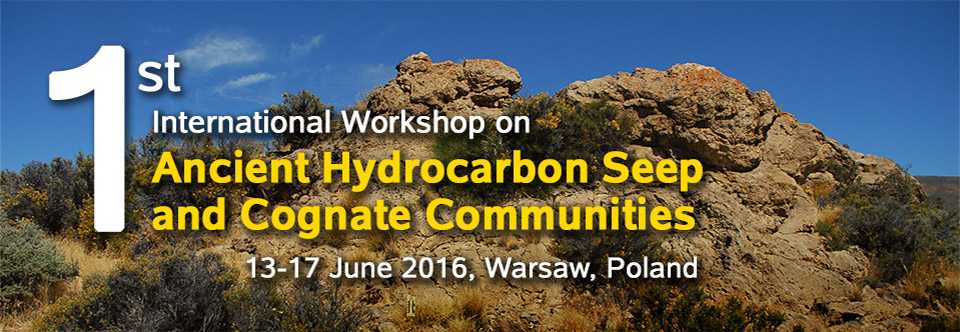
A LATE MIOCENE METHANE-SEEP FAUNA FROM KALIMANTAN, INDONESIA
Steffen KIEL1, Sonja REICH2, Willem RENEMA2, John D. TAYLOR3,
Frank P. WESSELING2, and Jonathan A. TODD4
1Swedish Museum of Natural History, Dept. of Palaeobiology, Box 50007, 10405 Stockholm, Sweden; 2Naturalis
Biodiversity Center, Department of Geology, P.O. Box 9517, 2300 RA Leiden, The Netherlands; 3British
Natural History Museum, Department of Life Sciences, London SW7 5BD, United Kingdom; 4British Natural
History Museum, Department of Earth Sciences, London SW7 5BD, United Kingdom
Corresponding author: steffen.kiel@nrm.se
A late Miocene methane-seep deposit and associated invertebrate fauna was found in the Kutai Basin in eastern Kalimantan, Indonesia. The fauna is dominated by the large, globular lucinid bivalve, Meganodontia sp. nov., reaching 124 mm in width, and by an elongate bathymodiolin mussel, Gigantidas sp. nov., reaching 87 mm in length. Further taxa include the small but abundant lucinid Cardiolucina aff. quadrata (Prashad, 1932) and the small vesicomyid bivalve Isorropodon sp.; rare are the lucinid Lucinoma sp., a possible thyasirid bivalve, and the gastropods Bathybembix (Calliostomatidae), Naticarius (Naticidae), Profundinassa (Nassariidae) and a possible turrid. Geologic setting and the bathymetric ranges of extant representatives of these taxa indicate that the fauna lived at an upper bathyal depth of around 400–500 m. Biogeographically, the fauna shows close affinities to Recent tropical Westpacific seep faunas. In contrast to the predominantly flat to moderately inflated lucinid bivalves at Jurassic to Paleogene seeps, we note that strongly inflated, globular lucinids such as Meganodontia and Cardiolucina started to appear at seeps only from the Miocene onward.
